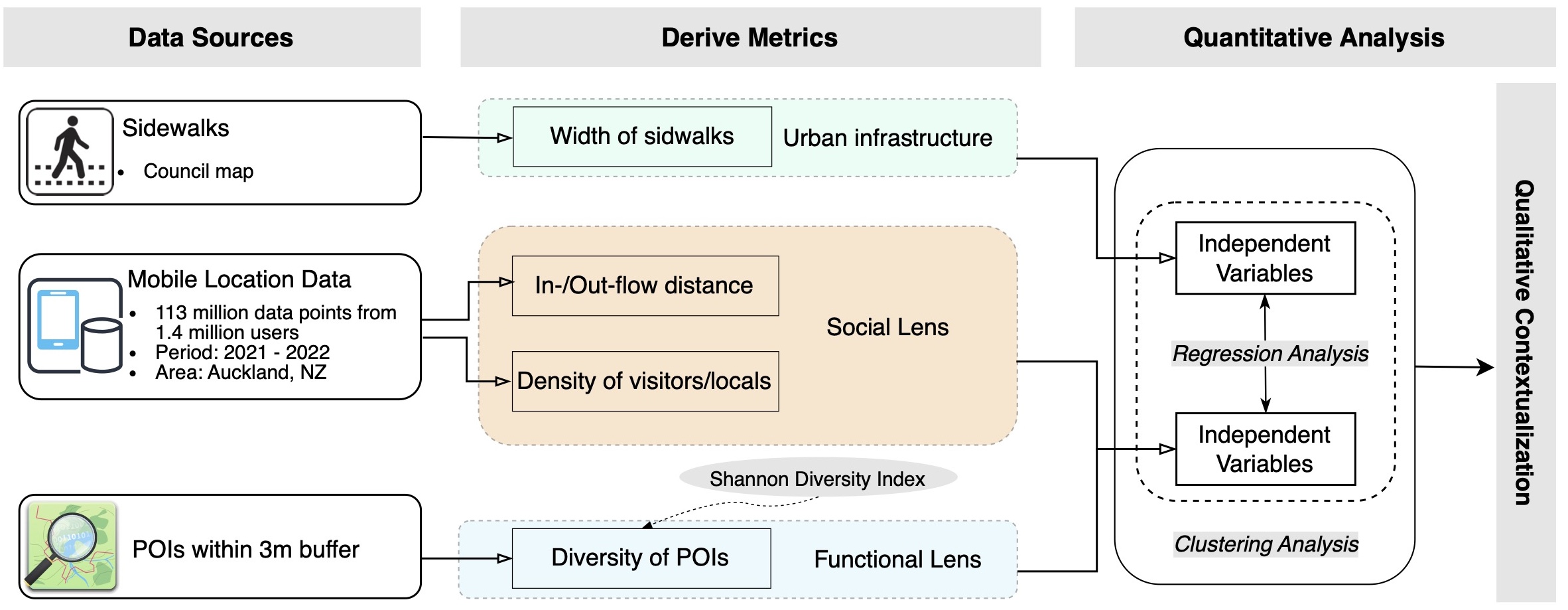Urban Street Dynamics
Assessing the Relationship of Sidewalk Width and Pedestrian Activity Based on Mobile Phone Data
This study empirically examines the adequacy of sidewalk widths in Auckland’s Central Business District (CBD) in light of increasing active mobility and sustainable urban planning trends. Recognizing the need to retrofit street spaces to prioritize pedestrian needs, we aim to determine whether current sidewalk dimensions meet the diverse requirements of users and align with sustainable urban goals. We analyzed average sidewalk widths and developed four mobility metrics—travel distance of inflow and outflow movements, and density of visitors and locals—using a large-scale mobile location dataset comprising 113 million data points from 1.4 million users. These metrics, reflecting urban vibrancy and sidewalk use, were correlated with sidewalk widths to assess their adequacy. Furthermore, we applied cluster analysis to these mobility metrics, along with the diversity of Points of Interest (POIs), to categorize sidewalk segments, uncovering intricate usage patterns. Our findings indicate that sidewalks typically range from 2-5 meters, catering to varied urban needs. Notably, we observed no direct correlation between sidewalk width and mobility patterns, but significant differences in inflow and outflow travel distances were evident, especially between key urban hubs and quiet residential neighbourhoods. Moreover, we identified seven distinct sidewalk categories, each reflecting unique qualities, suggesting that uniform widths do not define sidewalk utility or character. This highlights the need to rethink current capacity-focused sidewalk design, advocating for a nuanced approach that addresses the intricate demands of urban spaces and diverse user needs. This methodology is adaptable for other cities, offering a universal urban analysis and planning tool.
